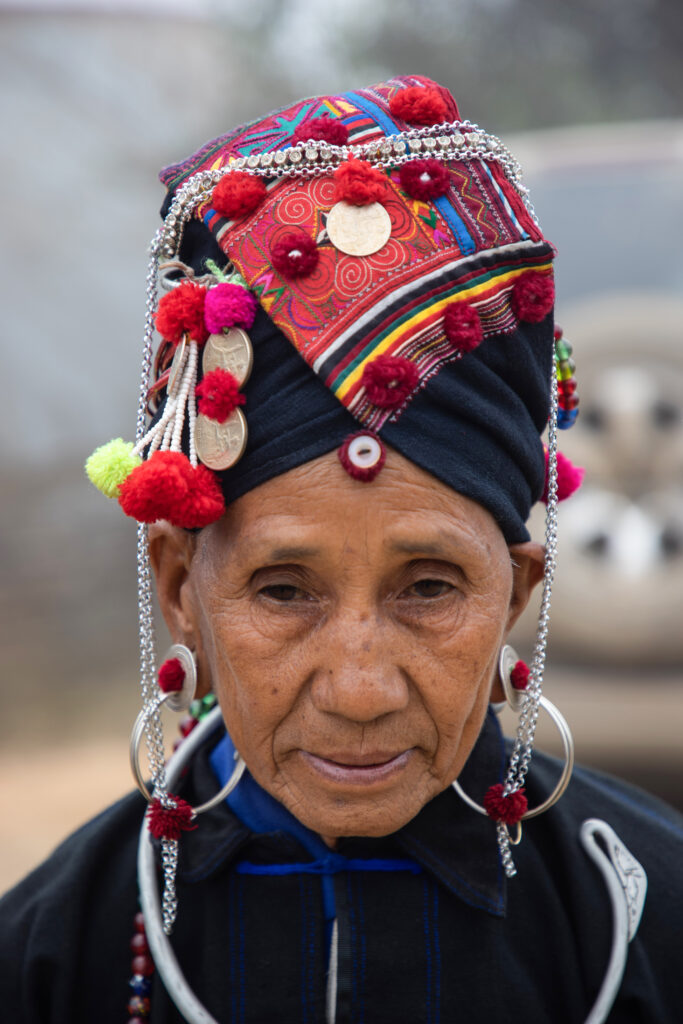The story of the Oma,
In the historic world heritage town of Luang Prabang, the Traditional Arts and Ethnology Centre (TAEC) opened a new eye-opening exhibition. “Claiming Inspiration: Artisans, Culture, and Commercialisation” delves into the complicated intersection of appreciation and appropriation within the global fashion industry. At the core of this exhibition lies a real-life incident concerning the Oma community.
The Oma, a small ethnic subgroup related to the Akha people, reside in the remote mountains of northern Laos. With a population of just 2,800 people across seven villages, no Oma are known to reside outside of Laos. With numbers such as these, you might expect their traditional designs and patterns to be a fading part of history. Instead, they were discovered replicated by a high-end clothing brand from Italy, copied without credit or consent.
The Traditional Arts and Ethnology Centre has worked with the Oma of Nanam Village since 2010, so they have a long and trusted relationship. When the TAEC team traveled to Nanam to explain what had happened, community members were full of shifting emotions — a blend of awe, confusion, and eventual indignation. The Oma embroider and applique their distinctive designs by hand onto fabric they have spun, woven, and dyed themselves — symbols of their very identity.

“We are the Oma people, and we preserve our culture by making and wearing our traditional clothes.”
— Khampheng Loma, Chief of Nanam Village
TAEC then collaborated with the Oma to develop a model to help protect their own heritage and intellectual property. This work led TAEC to connect with others tackling the same issue, and the truly global reach of cultural misappropriation became clear. The “Claiming Inspiration” exhibition showcases incredible artisan-crafted pieces from Mexico, the Philippines, Kenya, and Romania, all of which have been used as “inspiration” by high-end fashion designers. The exhibition is a platform, drawing attention to communities worldwide in their fight against the exploitation of their cultural identity.
This exhibition is not the end of this story. It is not a tale of wrongdoing and despondency, but one of resilience and global connection. The Oma and other communities are seeking opportunities to celebrate and share their traditions on an international stage using a system of true collaboration – where they can be respected, acknowledged, and fairly compensated.
The Oma represent just one of the 50 officially recognized ethnic groups in Laos, each with a story to tell. To explore Laos’ rich tapestry of cultural diversity, visit the Traditional Arts and Ethnology Centre in Luang Prabang.
Visit “Claiming Inspiration: Artisans, Culture and Commercialisation” at the Traditional Arts and Ethnology Centre, Luang Prabang: 9 am – 6 pm, Tuesday to Sunday. Tickets: 30,000 kip
TAEC Boutique:
9 am – 9 pm, 7 days a week
Lao Airlines has frequent flights to Luang Prabang from Vientiane, Bangkok, Chiang Mai, Hanoi, and Siem Reap.

Text BY Jennifer Mccallum
PHOTOGRAPHS BY Traditional Arts and Ethnology Centre



 ລາວ
ລາວ
